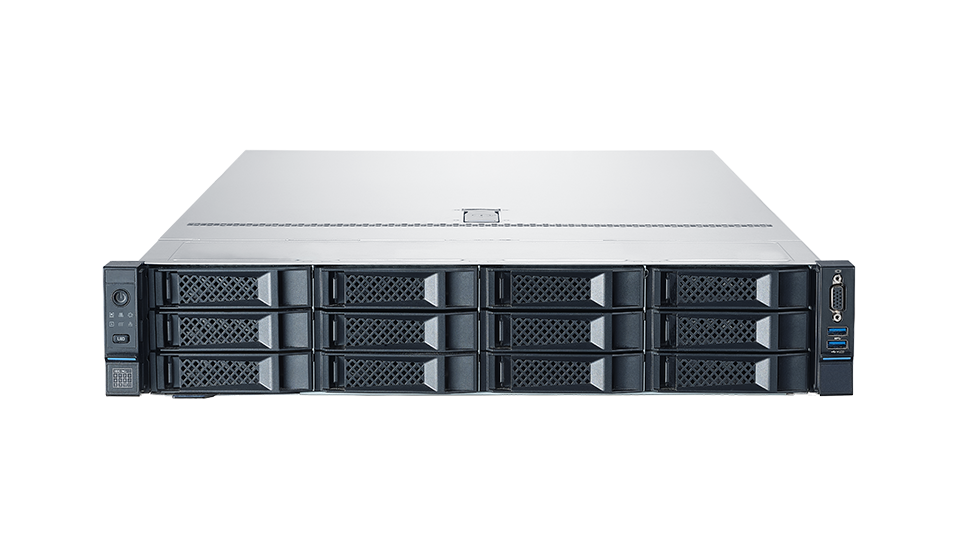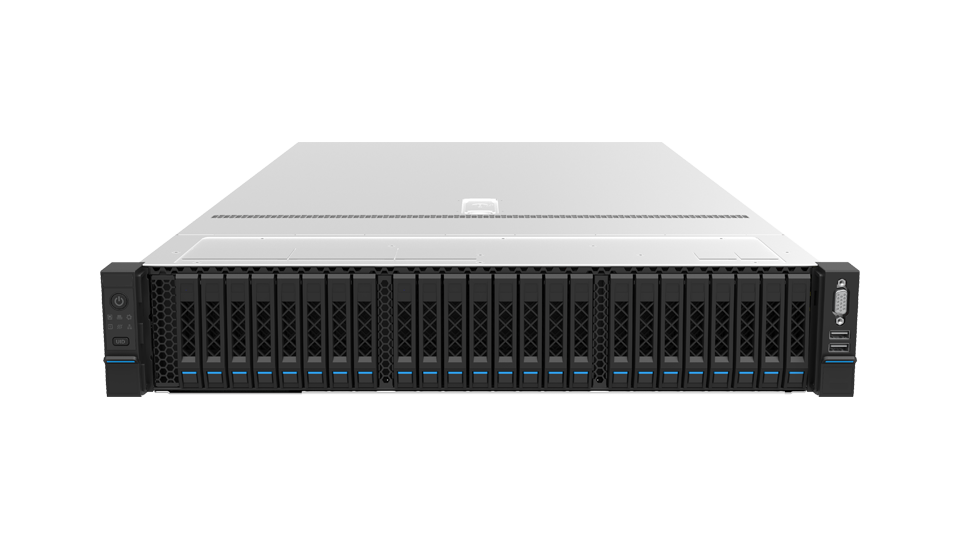KR2280V1 with AMD EPYC™ 7003 is a 2U dual-socket server with high compute performance, ecosystem compatibility and configuration flexibility. It can fulfill a variety of complicated workloads, and particularly fits application scenarios such as data analysis and processing, cloud, and high-performance computing.
Applications
High PerformancePowered by two AMD EPYC™ 7003 processors, supports up to 64 cores and 128 threads per CPU, up to 280 W TDP, a maximum Turbo frequency of 3.7 GHz, and 256 MB L3 cache per CPU and XGMI2 interconnect links at 18 GT/s. Up to 32 DDR4 ECC memory modules (up to 3200 MT/s, RDIMMs and LRDIMMs), with the maximum capacity of 4 TB, are supported to deliver a high speed and superior availability. |
|
|
|
|
Scalable PerformanceUp to 16x 3.5″ drive or 28x 2.5″ drive Optional OCP NIC 3.0 module with multiple network port options (10/25/40/100/200 Gbps), delivering a more flexible network architecture to applications Up to 8 standard PCIe expansion cards, further enhancing I/O performance Optional internal SATA/PCIe M.2 modules for diverse storage demands |
|
|
|
|
Smart ManagementServiceability: the system supports tool-free maintenance using optimized component designs for easy assembly/disassembly, greatly reducing O&M time. Temperature Regulation: Our unique intelligent regulating technology combined with an advanced air cooling system creates an optimum working environment to ensure server health. Rapid Response: With the latest BMC, technicians can quickly locate components that have failed (or are failing) through the Web GUI, fault diagnosis LEDs and UID LEDs on the front panel, simplifying maintenance, speeding up troubleshooting, and enhancing system availability. Minimal Downtime: Technicians can monitor system parameters and take appropriate actions in a timely manner via the alarms sent in advance via BMC to ensure system health and minimize system downtime. |
|
Specifications
| Model | KR2280-E1 |
|---|---|
| Processor | One or two AMD EPYC™ 7003 Series processors Up to 64 cores (base frequency of 2.45 GHz) Max. Turbo frequency at 3.7 GHz 256 MB L3 cache per CPU and XGMI2 interconnect links at 18 GT/s TDP up to 280W |
| Memory | Up to 32 DIMMs 8 memory channels per processor, and up to 2 memory slots per channel Up to 3200 MT/s (1DPC) RDIMMs and LRDIMMs supported ECC, memory mirroring and memory rank sparing |
| Storage | Front configuration: 24 x 2.5 hot-swap SATA/SAS/NVMe drive 12 x 2.5 or 3.5″ hot-swap SATA/SAS/NVMe drive |
| Rear configuration: 4 x 2.5 hot-swap SATA/SAS/NVMe SSD drive 4 x 3.5 (or 2.5″) SATA/SAS/NVMe SSD drive (hot-swap) |
|
| Internal configuration: 2 optional SATA M.2 drives or 1 PCle M.2 drive + 1 SATA M.2 drive |
|
| Storage Controller | Standard PCle RAID card controller and SAS card controller |
| Network Port | 1 optional OCP NIC 3.0 module (10 Gbps, 25 Gbps, 40 Gbps, 100 Gbps, and 200 Gbps) 2 optional onboard 1-Gbps electrical ports Standard PCIe form factor: 1 Gbps/10 Gbps/25 Gbps/40 Gbps/100 Gbps NIC |
| I/O Expansion | Up to 8 PCIe slots Up to 2 double-width GPUs or 4 single-width GPUs 1 hot-swap OCP NIC 3.0 (x16) |
| Interface | 2 rear USB 3.0 ports + 1 front USB 3.0 port + 1 front USB 2.0 port 1 front VGA port 1 rear VGA port |
| Fan | 4 hot-swap fans with N+1 redundancy |
| PSU | 550W / 800W / 1300W / 1600W / 2000W CRPS standard PSUs with 1+1 redundancy |
| Management | Integrated with 1 independent 1000 Mbps network port, dedicated for IPMI remote management |
| OS | Microsoft Windows Sever, Red Hat Enterprise Linux, SUSE Linux Enterprise Server, CentOS, etc. |
| Dimensions | With mounting ears: 478.8 x 87 x 811.7 mm (18.85 in x 3.43 in x 31.96 in) (W x H x D) Without mounting ears: 435 x 87 x 780 mm (17.13 in x 3.43 in x 30.71 in) (W x H x D) |
| Weight | < 37.5 kg (82.67 lbs) (with all drives loaded) |
| Operating Temperatur | 5°C ‒ 45°C (41°F ‒ 113°F) |



